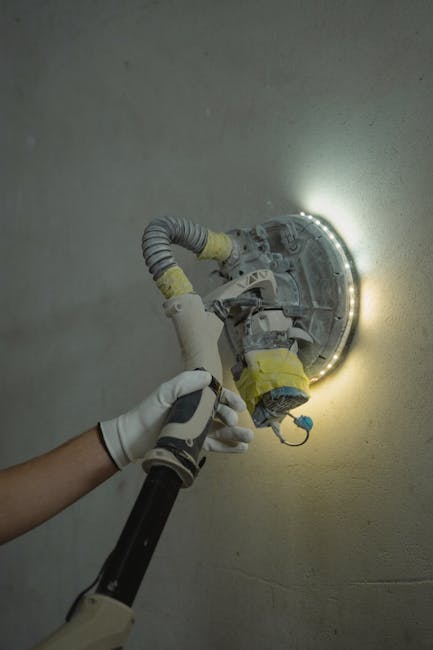- Introduction to Renewable Energy and Home Security Solutions
- Current Trends in Renewable Energy for Residential Use
- Advanced Security Technologies for Home Protection
- Benefits of Integrating Renewable Energy with Security Systems
- Case Studies of Successful Integration
- Challenges and Considerations for Homeowners
- Future Prospects and Innovations in Sustainable Home Protection
Introduction to Renewable Energy and Home Security Solutions
In recent years, the global landscape has seen an increasing emphasis on sustainability, with renewable energy sources becoming crucial in efforts to reduce carbon footprints and combat climate change. Among various sectors, the residential domain is witnessing a transformation where renewable energy solutions are progressively being integrated into daily living. This evolution not only addresses environmental concerns but also enhances the overall energy efficiency in households.
Renewable energy, derived from naturally replenished sources such as solar, wind, and hydro, has become more accessible and affordable for homeowners. With advancements in technology, residential renewable energy systems are now more efficient and reliable than ever before. For instance, the cost of installing solar photovoltaics has dramatically decreased over the past decade, making solar power a viable option for a large population segment.
Simultaneously, the importance of home security cannot be overstated. Modern homes often incorporate advanced security solutions, including surveillance cameras, smart locks, motion sensors, and automated alarm systems, to protect residents and their properties. These technologies have evolved to offer real-time monitoring, remote access, and integrations with other smart home devices.
As these two domains converge, the integration of renewable energy with home security solutions presents a promising avenue for enhancing sustainable home protection. By utilizing renewable energy sources to power security systems, homeowners can achieve a dual benefit: enhancing their home security while also reducing reliance on traditional energy supplies.
Such integration addresses several critical aspects. First, it provides a reliable and continuous power source for security systems, particularly in scenarios where grid power may be unstable or unavailable. Second, leveraging renewable energy for security needs can significantly cut down energy costs, offering long-term financial savings. Third, it contributes positively to environmental sustainability by reducing emissions and dependence on fossil fuels.
This introductory chapter sets the stage for exploring the interplay between renewable energy and home security. As we delve deeper into the subject, we will examine current trends, advanced technologies, benefits, real-world cases, potential challenges, and future prospects in sustainable home protection.
Current Trends in Renewable Energy for Residential Use
The trend towards renewable energy adoption in residential use is steadily increasing, driven by numerous factors such as environmental concerns, financial incentives, and technological advancements. According to the International Energy Agency (IEA), renewable energy sources are set to supply nearly 30% of the world’s electricity by 2024, with a substantial portion coming from residential sectors.
One significant trend in renewable energy for residential use is the rise of solar photovoltaics (PV). Solar PV systems are increasingly popular due to their improved efficiency and reduced costs. Data from the Solar Energy Industries Association (SEIA) indicates that the cost of residential solar panels has plummeted by more than 70% since 2010, making them more accessible to homeowners.
Energy storage solutions are also gaining traction. Homeowners are now integrating solar batteries like the Tesla Powerwall or the LG Chem RESU to store surplus energy generated during the day for use at night or during power outages. This not only ensures a continuous power supply but also maximizes the use of renewable energy, reducing reliance on the grid.
Another trend is the adoption of smart home energy management systems. These systems leverage advanced algorithms and machine learning to optimize energy use in the home. By monitoring energy consumption patterns and predicting energy needs, these systems can dynamically adjust to minimize waste and enhance efficiency. Companies like Google Nest and Schneider Electric offer solutions that integrate seamlessly with renewable energy systems.
Wind energy, though less common than solar for residential use, is also an emerging trend. Small-scale wind turbines are now available for homeowners in suitable locations. According to the American Wind Energy Association (AWEA), small wind turbines can be a viable option for homes in rural or remote areas where wind conditions are favorable.
The rise of electric vehicles (EVs) is another important trend impacting residential renewable energy use. Homeowners with EVs are increasingly installing home-based EV chargers powered by solar panels, creating a sustainable and efficient energy ecosystem. The International Council on Clean Transportation (ICCT) projects that as EV adoption increases, so will the demand for renewable energy solutions at home.
Government policies and incentives play a crucial role in promoting these trends. Programs such as the Solar Investment Tax Credit (ITC) in the United States or the Feed-in Tariff (FiT) schemes in various countries are significant drivers of residential renewable energy adoption. These incentives reduce the financial burden on homeowners and encourage the shift towards sustainable energy sources.
Lastly, the integration of home energy storage systems with virtual power plants (VPPs) is an innovative trend. VPPs aggregate the surplus energy stored in home batteries to create a network that can supply power back to the grid during peak demand times. This enhances grid stability and provides homeowners with additional income streams. Companies like Sonnen and Enphase Energy are pioneering this space.
In conclusion, the current trends in renewable energy for residential use reflect a growing commitment to sustainability, technological innovation, and energy independence. By staying informed about these trends, homeowners can make educated decisions to engage with renewable solutions effectively.
Advanced Security Technologies for Home Protection
At Praos, we’re dedicated to our most important role—ensuring the safety of your family and home. This commitment goes beyond simply setting up a security system in your home or business. With years of local expertise and an award-winning service track record, Praos stands as a leading local Richmond home security company. With a monitored new system plan, new customers receive FREE Equipment and Free Installation.
But our efforts don’t stop there. We’re also at the forefront of creating a truly connected home experience. This means one connected app for security, automation, and surveillance. Our team will work closely with you to customize a smart home system tailored to your needs and budget. No matter where you are, you can have peace of mind knowing that your home is monitored and protected.
Rates start at just $19.95/mo, reach out today & get protected.
Benefits of Integrating Renewable Energy with Security Systems
The integration of renewable energy sources with advanced security systems offers several significant benefits. This synergy not only enhances home protection but also promotes sustainability and cost efficiency.
One of the primary benefits is the reduction in energy costs. By utilizing renewable energy sources such as solar panels or wind turbines to power security systems, homeowners can significantly lower their electricity bills. The reliance on self-generated power minimizes the dependency on conventional energy sources, which are subject to fluctuating prices.
Moreover, integrating renewable energy with security systems contributes to environmental sustainability. Traditional energy generation methods, such as fossil fuels, produce greenhouse gases that contribute to climate change. Renewable energy systems, on the other hand, generate electricity with little to no greenhouse gas emissions. By adopting renewable energy for home security, homeowners contribute to reducing their carbon footprint.
Another advantage is the increased reliability of security systems. Renewable energy sources, especially when combined with battery storage solutions, ensure that security systems remain operational during power outages. This is particularly crucial for maintaining the continuous operation of critical security devices such as surveillance cameras, alarm systems, and smart locks.
Furthermore, the integration of renewable energy with smart grid technology enhances the resilience of home security systems. Smart grids offer dynamic energy management, allowing for real-time monitoring and optimization. This ensures that security systems receive a constant and efficient power supply, enhancing their overall performance and reliability.
The use of renewable energy can also facilitate decentralized power generation, which is less vulnerable to large-scale grid failures. In the event of a major power outage affecting a broad area, homes powered by renewable energy sources can continue to protect themselves autonomously.
From an economic perspective, homes equipped with renewable energy resources and advanced security systems may see an increase in property value. According to several real estate studies, properties with sustainable energy solutions are more attractive to buyers, often commanding higher market prices.
Additionally, the integration of renewable energy can lead to potential tax incentives and rebates. Various regions and countries offer financial benefits to homeowners who invest in renewable energy technologies, which can further offset the initial costs of implementation.
In summary, the benefits of integrating renewable energy with advanced security systems are multifaceted. They include cost savings, environmental sustainability, enhanced operational reliability, improved property values, and potential economic incentives. This integration represents a progressive step towards sustainable and resilient home protection.
Case Studies of Successful Integration
Successful integration of renewable energy sources with advanced security solutions can be observed in various real-world implementations. These case studies highlight the synergy between sustainability and enhanced home protection and demonstrate practical applications of the technologies in diverse settings.
In Germany, several households exemplify the effective combination of solar energy systems with smart security solutions. Homeowners have leveraged their photovoltaic installations not only to supply electricity but also to power advanced security devices. These setups typically include high-definition surveillance cameras, smart locks, and automated lighting systems, all managed through integrated home automation platforms. The use of solar energy ensures that these security systems remain operational even in the event of power outages, enhancing reliability and resilience.
In the United States, a growing number of residential properties utilize wind turbines in conjunction with sophisticated security networks. Particularly in rural areas, where the risk of interruptions in power supply can be higher, wind energy proves to be a dependable source. The generated power supports systems such as motion-activated cameras, alarm systems, and environmental sensors that can detect smoke, carbon monoxide, and other hazards. Energy storage solutions, like advanced battery systems, further ensure that energy harvested during windy conditions is conserved for continuous security operation.
Japan offers insightful examples of integrating geothermal energy with security infrastructures, especially in regions with significant geothermal activity. Homes in these areas use geothermal heat pumps in tandem with digital security systems to create a comprehensive, sustainable protection strategy. This integration significantly reduces the carbon footprint while ensuring that devices such as smart doorbells, intruder detection systems, and real-time monitoring setups remain functional without disruption.
In Australia, some homeowners have adopted a hybrid approach, combining solar panels and battery storage systems with sophisticated home security frameworks. The combination has proven highly effective in reducing reliance on the grid and enhancing security autonomy. The stored renewable energy is utilized for operating advanced security technologies, including AI-driven surveillance systems capable of distinguishing between potential threats and false alarms, thus reducing the likelihood of unnecessary responses.
These case studies demonstrate that the integration of renewable energy sources with home security systems is not only feasible but also advantageous, providing both environmental and practical benefits. The successful implementation in diverse geographical and technological contexts underscores the versatility and potential of this integrated approach.
Challenges and Considerations for Homeowners
Integrating renewable energy systems with advanced home security solutions presents a promising yet complex frontier for sustainable home protection. However, homeowners must navigate various challenges and considerations to effectively implement and manage such integrations.
One significant challenge is the initial cost of deploying renewable energy systems combined with advanced security technologies. Although the long-term savings on energy bills and the potential increase in property value can offset these expenses, the upfront investment can be substantial. Homeowners often need to evaluate their budget and consider financing options, such as loans or incentives that can mitigate the financial burden.
Another consideration is the compatibility of existing infrastructure with new technologies. Ensuring seamless integration between renewable energy sources, such as solar panels or wind turbines, and sophisticated security systems can be technically demanding. This integration requires specialized expertise and often entails upgrading or modifying existing electrical systems to handle new loads and interfaces.
Maintenance and reliability are additional concerns. Renewable energy systems typically require regular maintenance to ensure peak performance, while advanced security systems also need periodic updates and checks to function effectively. Homeowners must be prepared to schedule and possibly incur costs for regular maintenance services, thus necessitating planning and resources allocation.
Further, the variability in energy generation from renewable sources, especially solar and wind, can pose challenges for continuous, and reliable power supply for security systems. To mitigate this, homeowners might need to invest in energy storage solutions like batteries, which add another layer of cost and complexity.
Certain environmental factors, such as geographic location and local weather patterns, also impact the feasibility and efficiency of integrating renewable energy systems. For instance, solar panels are more effective in regions with ample sunlight, while wind turbines require consistent wind patterns to be viable. Homeowners should assess their local environment to determine the most suitable renewable sources.
The table below summarizes some key challenges and considerations for integrating renewable energy with home security systems:
| Challenge | Consideration |
|---|---|
| Initial Cost | Evaluate budget and financing options |
| Infrastructure Compatibility | Ensure seamless integration and potential upgrades |
| Maintenance and Reliability | Plan for regular maintenance and updates |
| Energy Variability | Invest in energy storage solutions |
| Environmental Factors | Assess local conditions for feasibility and efficiency |
Additionally, regulatory considerations and building codes can influence the integration process. Homeowners must ensure compliance with local regulations that govern the installation and operation of renewable energy systems and security technologies.
Lastly, user education is crucial for effective system management. Homeowners and residents need proper training to operate, monitor, and troubleshoot integrated systems, thus highlighting the importance of user-friendly interfaces and thorough instructional resources from providers.
In conclusion, while the integration of renewable energy with advanced security solutions offers significant benefits, homeowners must carefully consider the financial, technical, environmental, and regulatory challenges involved. Addressing these challenges with comprehensive planning and informed decision-making will be essential for successful and sustainable implementation.
Future Prospects and Innovations in Sustainable Home Protection
The future of sustainable home protection lies at the intersection of renewable energy and advanced security technologies. As both fields continue to evolve, several promising innovations are poised to redefine how homeowners approach security in the context of sustainability.
Emerging Renewable Energy Technologies
Among the promising technologies, next-generation solar panels and energy storage solutions stand out. Advances in solar photovoltaic (PV) efficiency and the development of perovskite solar cells are making renewable energy sources more viable and affordable for residential use. Innovations in battery technology, such as solid-state batteries and lithium-sulfur batteries, are enhancing energy storage capabilities, ensuring that homes can remain powered and secure even during grid outages.
Smart Grid Integration
As smart grids become more widespread, they offer improved resilience and reliability in energy distribution. These grids utilize advanced metering infrastructure (AMI) and real-time data analytics to optimize energy usage and storage. For security systems, smart grid integration ensures that backup power from renewable sources kicks in promptly during power failures, maintaining the functionality of critical security devices such as surveillance cameras and alarm systems.
Artificial Intelligence and Machine Learning
Artificial Intelligence (AI) and Machine Learning (ML) are revolutionizing home security by providing predictive insights and automating responses. AI can analyze patterns in energy consumption and predict potential security threats based on anomalies. For example, an AI-powered system could recognize unusual energy usage that might indicate tampering or intrusion, and proactively alert homeowners or security services.
Hybrid Energy Systems
Hybrid energy systems, combining multiple renewable sources like solar, wind, and hydro, offer enhanced reliability and efficiency. These systems are particularly beneficial for homes in diverse climatic conditions. By leveraging the strengths of various renewable sources, hybrid systems ensure a continuous supply of energy, which is crucial for maintaining uninterrupted security coverage.
Internet of Things (IoT) Integration
The integration of IoT devices with renewable energy systems and security solutions is creating smarter, more connected homes. IoT sensors can monitor energy production and consumption in real-time and can also detect security breaches or environmental hazards. These sensors can communicate with each other, providing a comprehensive network that enhances both energy management and security response.
Blockchain for Secure Energy Transactions
Blockchain technology offers a decentralized and secure way to manage energy transactions within smart grids. For homeowners, blockchain can facilitate transparent and tamper-proof energy trading with neighbors or local microgrids. This transparency extends to security, as blockchain can also be used to verify the integrity of security data collected from various devices, ensuring that it has not been altered or compromised.
The convergence of renewable energy and advanced security technologies holds significant promise for the future of sustainable home protection. By embracing these innovations, homeowners can not only enhance their security measures but also contribute to a more sustainable and resilient energy ecosystem.






